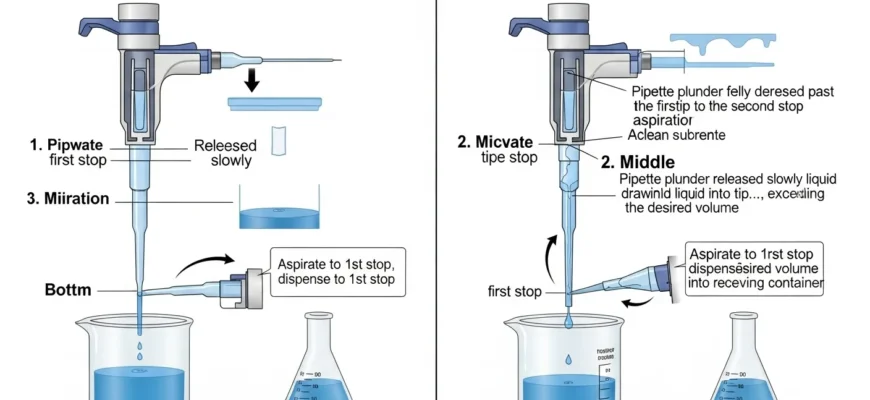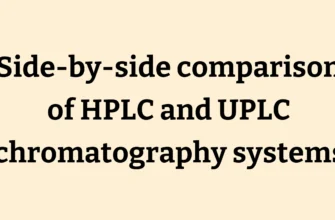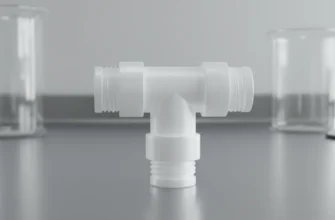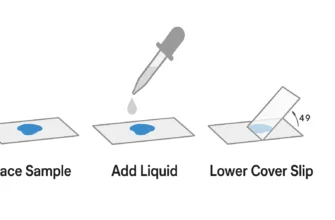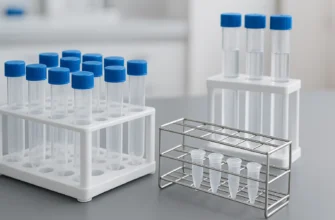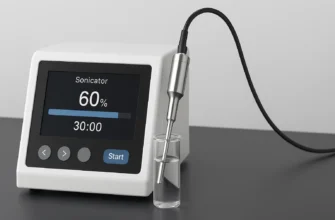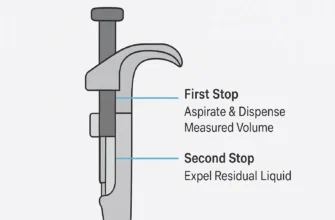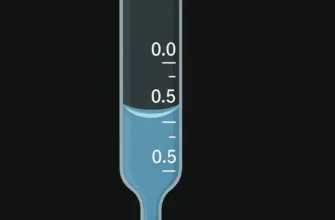Mastering Liquid Transfer: Essential Pipetting Techniques for Superior Laboratory Outcomes
The precision of liquid transfer serves as the cornerstone of reliable scientific research across all laboratory settings. From preparing complex biological solutions to dispensing minute volumes for sensitive analytical procedures, the pipetting technique employed directly impacts data integrity and experimental reproducibility. With the global pipette market projected to reach $2.02 billion by 2029, the critical importance of mastering both forward and reverse pipetting techniques becomes increasingly evident for laboratory professionals seeking optimal performance.
The liquid handling robot market, valued at $6.94 billion by 2034, underscores the industry’s commitment to minimizing human error through advanced automation and improved pipetting standards. However, even the most sophisticated equipment cannot compensate for poor technique, making proper training and understanding of pipetting fundamentals essential for achieving accurate and reproducible results.
The Foundation of Laboratory Accuracy: Understanding Liquid Handling Fundamentals
Laboratory accuracy depends fundamentally on precise liquid transfer, with pipetting serving as the quantitative backbone of experimental validity. Every assay, dilution series, and reaction setup relies on the assumption that specified volumes were transferred correctly using appropriate pipetting technique. Inaccurate liquid handling can compromise entire experimental datasets, leading to failed experiments, inconsistent results, and lack of reproducibility—critical elements that undermine scientific validation.
Research indicates that up to 30% of pipettes in laboratory settings may not perform within acceptable error limits, emphasizing the critical importance of combining proper technique with regular calibration check protocols. This statistic highlights the necessity of understanding both manual pipette operation and electronic pipettes functionality to maintain laboratory standards and ensure reliable data generation.
Air Displacement Pipette Principles: The Mechanical Foundation
The vast majority of laboratory pipettes—both manual pipette systems and electronic pipettes—operate on air displacement principles. This mechanism relies on piston movement within a sealed cylinder to create volume displacement. When the plunger is depressed, the piston expels a predetermined air volume. Upon release, the resulting vacuum draws liquid into the disposable pipette tips.
This elegant system ensures that biological solutions and other liquids never contact the internal pipette components, preventing contamination risks while enabling accurate liquid transfer. The air cushion between the piston and liquid sample serves as a critical barrier, with the quality of this seal directly affecting measurement accuracy and precision.
Essential Components and Their Critical Functions
Several key components work together to ensure accurate liquid dispensing:
Piston Assembly: The core mechanism that creates volume displacement through precise movement within the pipette cylinder.
Air Cushion: The critical air space between piston and liquid that enables non-contact operation while maintaining measurement accuracy.
Pipette Tips: Disposable components that directly contact samples, with the pipette tips market projected to reach $2.3 billion by 2031. These essential consumables must maintain perfect seals with the tip cone for accurate aspiration.
Tip Cone: The interface between pipette body and disposable tips, requiring precise manufacturing tolerances to ensure proper fit and airtight seals.
The quality and compatibility of these components directly influence pipetting accuracy, with manufacturer specifications typically valid only when using recommended tip combinations.
Forward Pipetting: The Standard Approach for Aqueous Solutions
Forward pipetting represents the most commonly used technique in laboratory settings, offering intuitive operation and excellent accuracy for non-problematic liquids including aqueous solutions, buffers, diluted acids, and standard biological solutions. This technique serves as the foundation for most liquid handling applications in routine laboratory work.
Mastering Forward Pipetting Technique: Step-by-Step Implementation
Volume Setting: Adjust the pipette to the desired volume using the volume selection mechanism, ensuring the setting falls within the pipette’s optimal range.
Pre-wetting Protocol: Aspirate and dispense the target liquid 2-3 times to equilibrate air temperature and humidity within the tip, reducing evaporation effects. This critical step is particularly important when working with small volumes or volatile compound solutions.
Aspiration Phase: Depress the plunger to the first stop, immerse the tip 2-3 mm below the liquid surface, and release the plunger slowly and smoothly to draw liquid into the tip. Proper immersion depth prevents air aspiration while avoiding excess liquid adhesion to the tip exterior.
Dispensing Phase: Position the tip against the inner wall of the receiving vessel at a vertical pipetting angle, then depress the plunger smoothly to the first stop to dispense the measured volume.
Blowout Step: After a brief pause, depress the plunger to the second stop to expel any remaining liquid from the tip, ensuring complete delivery.
Withdrawal: Remove the tip from the vessel before releasing the plunger to prevent re-aspiration of dispensed liquid.
Optimal Applications and Performance Characteristics
Forward pipetting excels with liquids exhibiting low viscosity and low vapor pressure, making it ideal for:
-
Standard Buffers: Phosphate, Tris, and other common buffer solutions used in biological assays
-
Aqueous Solutions: Distilled water, de-ionized water, and test water applications
-
Diluted Acids and Bases: Solutions with moderate pH that don’t exhibit extreme surface tension properties
-
Cell Culture Media: Standard tissue culture formulations without high viscosity additives
-
Enzymatic Reagents: Most enzyme solutions in standard buffer systems
The technique’s primary advantages include operational speed, intuitive learning curve, and excellent accuracy when applied to appropriate liquid types.
Common Pitfalls and Best Practices
Several factors can compromise forward pipetting accuracy:
Aspiration Speed Issues: Rapid aspiration can cause air bubbles or sample splash within the tip, affecting measurement precision. Maintaining consistent, moderate aspiration speed prevents these complications.
Immersion Depth Errors: Excessive tip immersion causes liquid retention on the tip exterior, while insufficient immersion can lead to air aspiration, particularly with large volumes.
Timing Inconsistencies: Varying pause times between aspiration and dispensing can affect measurement reproducibility, especially with volatile compound solutions.
Angle Deviations: Maintaining proper vertical pipetting angle (within 20° of vertical) ensures consistent liquid transfer and prevents measurement variations.
Reverse Pipetting: Specialized Technique for Challenging Liquids
When forward pipetting proves inadequate for viscous liquids, volatile compound solutions, or foaming substances, reverse pipetting provides superior accuracy and reproducibility. This specialized technique compensates for liquid retention and surface tension effects that compromise standard forward methods.
Reverse Pipetting Protocol: Advanced Implementation
Volume Configuration: Set the pipette to the desired dispensing volume, recognizing that more liquid will be aspirated than dispensed.
Enhanced Aspiration: Depress the plunger to the second stop (beyond the first stop), immerse the tip just below the liquid surface, then release the plunger slowly to aspirate excess volume.
Precise Dispensing: Position the tip against the vessel wall and depress the plunger smoothly to the first stop only, dispensing the exact set volume while retaining excess liquid in the tip.
Residual Management: The remaining liquid in the tip represents the compensation for surface tension and viscosity effects and should be discarded appropriately.
Scientific Principles Behind Reverse Pipetting Success
The effectiveness of reverse pipetting lies in its compensation for liquid retention characteristics. Viscous liquids exhibit high surface tension and adhere strongly to pipette tip walls. In forward pipetting, this retained film constitutes part of the measured volume, resulting in systematic under-delivery.
Reverse pipetting addresses this by aspirating excess volume initially. When dispensing to the first stop, the piston travels the precise distance for the set volume, but the liquid film remaining in the tip comes from the initial excess rather than the measured dose. This ensures accurate delivery regardless of liquid properties.
Specialized Applications and Superior Performance
Reverse pipetting proves essential for:
Viscous Liquids: Glycerol solutions, protein-rich samples, enzyme preparations, and viscous reagents that exhibit strong surface tension effects.
Foaming Solutions: Detergents, surfactants, and biological solutions containing proteins that create foam during standard aspiration.
Volatile Compound Handling: Ethanol, methanol, acetone, and other solvents prone to evaporation within pipette tips.
Small Volume Applications: Volumes below 10 µL where even minimal liquid retention represents significant percentage error.
Biological Solutions: Serum samples, BSA solution standards, and other protein-containing liquids that require precise quantification.
Advanced Liquid Handling Considerations
Temperature Effects and Environmental Controls
Temperature variations significantly impact pipetting accuracy, particularly when working with volatile compound solutions or temperature-sensitive biological solutions. Equilibrating pipette tips, liquids, and pipettes to consistent temperatures minimizes volume variations due to thermal expansion and evaporation effects.
Pre-equilibration: Allow all components to reach room temperature before beginning critical measurements.
Vapor Saturation: Pre-wetting becomes critical with volatile solutions to achieve vapor saturation within the pipette tip, preventing continued evaporation during handling.
Humidity Control: Laboratory environments with controlled humidity reduce evaporation effects, particularly important for small volume applications.
Challenging Liquid Properties and Specialized Techniques
Different liquid properties require adapted approaches:
High Viscosity Solutions: Require slower aspiration and dispensing speeds, wider bore tips, and frequently benefit from reverse pipetting technique.
Low Surface Tension Liquids: May require modified tip immersion depths and dispensing angles to prevent incomplete delivery.
Warm Liquids: Exhibit increased vapor pressure, making rapid handling and pre-wetting critical for accuracy.
Particle Dilution: Suspensions require gentle mixing and consistent pipetting rhythm to maintain homogeneity during transfer.
Quality Control and Calibration Standards
Calibration Check Protocols and BSA Solution Standards
Regular calibration check procedures using standardized solutions ensure ongoing accuracy. BSA solution preparations serve as excellent calibration standards due to their stability and well-characterized properties.
Gravimetric Verification: Using analytical balances to verify dispensed volumes provides traceable accuracy measurements.
BSA Calibration Standards: Prepared at concentrations of 20-100 µg/ml, these solutions offer reliable reference points for both pipette verification and protein assay standardization.
Statistical Analysis: Multiple measurements (typically 4-10 per volume) provide precision data and identify systematic errors.
ISO Standards and Regulatory Compliance
Modern pipette calibration follows ISO 8655:2022 standards, which define testing procedures for piston-operated volumetric apparatus. These standards specify:
Error Limits: Maximum permissible deviations for accuracy and precision at tested volumes.
Testing Protocols: Required measurement procedures, environmental controls, and documentation standards.
Calibrated Pipettes: Instruments meeting these standards with proper documentation for regulatory compliance.
ISO 17025 accreditation provides additional assurance through traceability chains and measurement uncertainty documentation.
Maintenance Tips and Pipette Care
Systematic Maintenance Protocols
Proper pipette maintenance ensures continued accuracy and extends instrument life:
Daily Inspection: Check for external contamination, particularly on the tip cone where sample contact occurs.
Cleaning Procedures: Use 70% ethanol for external cleaning, avoiding harsh solvents that might damage seals or internal components.
Periodic Service: Disassemble, clean, and lubricate piston assemblies every 3-6 months depending on usage frequency.
Component Replacement and Service Intervals
Regular replacement of wear components maintains performance:
O-Ring Replacement: Seals require periodic replacement, especially when handling organic solvents or extreme pH solutions.
Piston Lubrication: Proper lubrication prevents wear and maintains smooth operation.
Spring Maintenance: Piston springs require inspection and occasional replacement to maintain consistent force application.
Thermo Scientific Finnpipette Maintenance
Thermo Scientific Finnpipettes require specific maintenance protocols:
Service Tools: Specialized disassembly tools facilitate proper maintenance without damage.
Lubrication Products: Only manufacturer-specified lubricants should be used to prevent component damage.
Calibration Frequency: Daily use requires calibration checks every three months, with full service every six months.
Laboratory Setting Optimization and Best Practices
Environmental Controls for Consistent Results
The laboratory setting significantly influences pipetting accuracy:
Temperature Stability: Minimize temperature fluctuations that cause volume variations through thermal expansion.
Humidity Control: Maintain consistent humidity to reduce evaporation effects, particularly critical for small volume work.
Vibration Isolation: Minimize disturbances that can affect precision during liquid transfer operations.
Ergonomic Considerations and User Training
Proper ergonomics prevent fatigue and maintain consistency:
Posture Management: Maintain upright posture with pipette held vertically to prevent measurement variations.
Hand Position: Consistent grip and thumb placement ensure reproducible plunger operation.
Work Flow Organization: Arrange materials to minimize reaching and maintain consistent pipetting rhythm.
System Instability and Troubleshooting
Common issues and solutions include:
Baseline Current Variations: Electronic pipettes may show drift requiring recalibration or service.
Tip Ejection Problems: Mechanical issues with tip ejectors affect workflow efficiency and require prompt attention.
Vapor Pressure Effects: High vapor pressure liquids require specialized handling protocols including rapid transfer and enhanced pre-wetting.
Emerging Technologies and Future Directions
Liquid Handling Robot Integration
Modern laboratory automation incorporates advanced liquid handling robots for high-throughput applications:
Precision Enhancement: Robotic systems achieve superior reproducibility through consistent mechanical operation.
Multi-Channel Capabilities: Simultaneous processing of multiple samples increases throughput while maintaining accuracy.
Software Integration: Advanced control systems provide data tracking, quality control, and integration with laboratory information systems.
Positive Displacement Pipettes and Specialized Applications
For extremely challenging liquids, positive displacement pipettes offer unique advantages:
Direct Contact Systems: Piston tip directly contacts liquid, eliminating air cushion effects.
Viscous Liquid Handling: Superior performance with high-viscosity solutions where air displacement methods fail.
Contamination Prevention: Disposable piston tips prevent cross-contamination while handling hazardous materials.
Micro-Syringe Tips and Ultra-Low Volume Handling
Advanced tip technologies enable precise handling of extremely small volumes:
Micro-Syringe Tips: Specialized designs for sub-microliter applications with enhanced precision.
Non-Contact Dispensing: Acoustic and piezoelectric systems eliminate physical contact for sensitive applications.
High-Resolution Imaging Tools: Advanced monitoring systems provide real-time verification of liquid transfer operations.
Quality Assurance and Error Prevention
Contamination Risks and Prevention Strategies
Preventing cross-contamination requires systematic approaches:
Tip Management: Use fresh tips for each sample to prevent cross-contamination between biological solutions.
Source Container Protocols: Avoid tip contact with container walls or surfaces that might introduce contaminants.
Aerosol Control: Proper technique minimizes aerosol generation that can contaminate surrounding areas.
Graft Estimation and Sample Splash Prevention
Critical considerations for sensitive applications:
Volume Verification: Use multiple measurement methods to verify critical volumes in important experiments.
Sample Splash Mitigation: Controlled dispensing speeds and proper tip positioning prevent sample loss through splashing.
Vapor Saturation Management: Pre-wetting and rapid handling prevent volume loss through evaporation.
Advanced Applications and Specialized Protocols
Lab Academy Training and Professional Development
Comprehensive training programs ensure proper technique implementation:
Hands-On Training: Practical exercises with real samples develop muscle memory and consistency.
Theoretical Knowledge: Understanding liquid properties and physical principles enables technique optimization.
Certification Programs: Formal training verification ensures compliance with laboratory standards.
Fluid System Integration and Automated Solutions
Modern laboratories increasingly integrate liquid handling with broader fluid system management:
Fluid Cells: Automated systems incorporating multiple liquid handling stations for complex protocols.
Liquid Retention Monitoring: Advanced sensors detect and compensate for liquid retention effects.
Large Volume Processing: Automated systems handle bulk liquid dispensing while maintaining accuracy for small volume aliquots.
Implementation Guidelines and Decision Framework
Technique Selection Criteria
Choose appropriate methods based on systematic evaluation:
Liquid Properties Assessment: Analyze viscosity, volatility, and surface tension characteristics to guide technique selection.
Volume Requirements: Match pipette selection and technique to required volume ranges for optimal accuracy.
Accuracy Demands: Consider error tolerances and precision requirements when selecting appropriate protocols.
Workflow Integration and Efficiency
Optimize laboratory workflows through systematic implementation:
Protocol Standardization: Establish consistent procedures across all laboratory personnel.
Quality Control Integration: Build verification steps into routine protocols to ensure ongoing accuracy.
Training Reinforcement: Regular refresher training maintains technique standards and introduces new methodologies.
Excellence Through Systematic Implementation
Mastering liquid transfer represents a fundamental skill that distinguishes exceptional laboratory practice from routine work. While forward pipetting remains the efficient standard for routine aqueous solutions, understanding and correctly implementing reverse pipetting technique proves essential for accuracy and reproducibility when handling challenging liquid properties including viscous liquids, volatile compounds, and biological solutions.
Success requires systematic evaluation of liquid properties, volume requirements, and application demands to select appropriate pipetting techniques. Combined with proper pipette maintenance, regular calibration checks, and adherence to best practices, this comprehensive approach enables researchers to minimize error limits, build confidence in experimental data, and achieve superior laboratory outcomes.
The continued evolution of liquid handling technology, from advanced electronic pipettes to sophisticated liquid handling robots, provides new opportunities for enhanced precision and throughput. However, fundamental understanding of pipetting principles and proper technique implementation remains the cornerstone of reliable scientific measurement, regardless of the sophistication of available equipment.
By mastering both forward and reverse pipetting techniques, maintaining rigorous quality standards, and staying current with emerging technologies, laboratory professionals can ensure their liquid handling practices support the highest levels of scientific excellence and experimental reproducibility. This commitment to technical excellence ultimately translates into more reliable data, enhanced research productivity, and greater confidence in experimental outcomes across all areas of scientific investigation.

